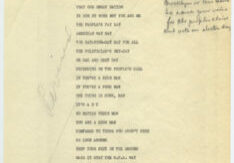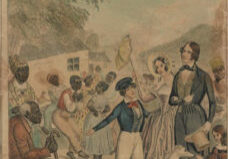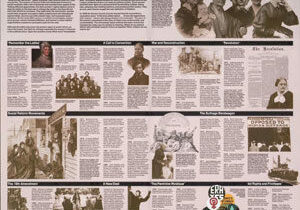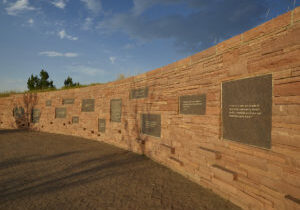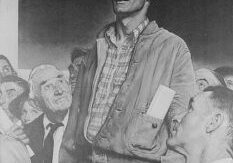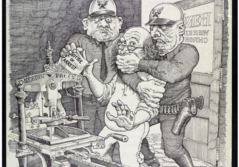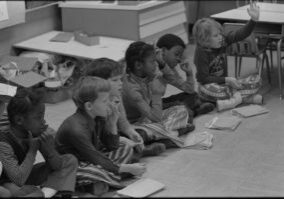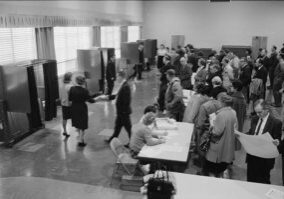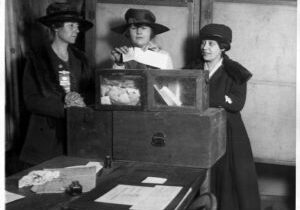Lesson Plans
Election Day
Students explore, compare, and contrast historical and contemporary reflections about elections in America.
Illustrating America
Students explore the stories we tell when illustrating America through primary source analysis, reflection, and creation.
Women’s Rights: Seneca Falls & Beyond
Students investigate a key event in the history of women's rights and the importance of commemorating the struggle for equal rights, then consider possible contributions to help ensure a future with greater equality.
Gun Violence and Next-Generation Coalitions
Students deepen understanding of civic action through a focus on the empowerment that citizens gain through building coalitions through an exploration of the accomplishments of young people to help bring about changes through civic action. Referencing Library of Congress resources and sources of the Columbine school shooting, students identify the potential of young people in creating positive change through civic action. Students then examine current problems or causes about which they are passionate and draft an action plan.
Securing Our Freedoms Beyond the Bill of Rights
Students analyze primary sources from the Library of Congress including Norman Rockwell’s “Four Freedoms” and “The Bill of Rights” to the U.S. Constitution. Students then identify amendments related to two of the four freedoms from the primary sources and then work in small groups to reach consensus and propose a new amendment to secure rights or freedoms not included in the Bill of Rights.
Freedom of the Press, Censorship, and Sedition
Students explore freedom of the press as they examine sources related to government censorship of the press. After reviewing the First Amendment and the Sedition Act of 1798, students examine a political cartoon to discuss the relevance of freedom of the press over time. Finally, students design and create their own poster promoting freedom of the press today.
Education and Equality in the Courts
Students analyze primary sources related to equality in education in the United States. In Part I, students analyze two sets of primary sources that illustrate major transformations in American public education following both the Mendez v. Westminster (1947) federal case and the Brown v. Board of Education (1954) Supreme Court case. In Part II, students participate in a moot court activity about expanding equality for undocumented immigrant and legal-resident or citizen students in the historic Supreme Court case of Plyler v. Doe (1982). Students then write their answers to questions about the role of equality in public education.
Does Every Vote Count?
Students analyze primary sources to examine examples of voting, then discuss who votes and how ballots have changed to make voting equitable for all eligible voters.
The Impact of Voting
Students analyze primary sources to review their own understandings of voting rights in the United States, learn how voting rights have changed over time, and gain a better understanding of how the right to vote has impacted equality. After, students use their learning to create a teen voting information campaign.
- « Previous
- 1
- …
- 6
- 7
- 8
